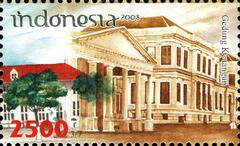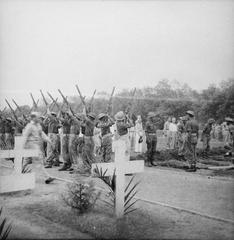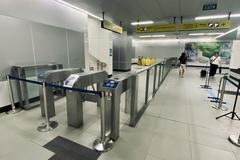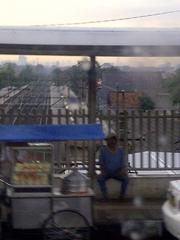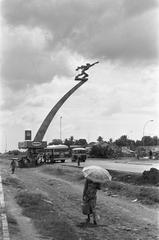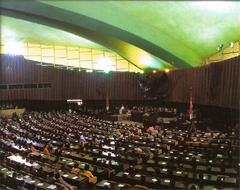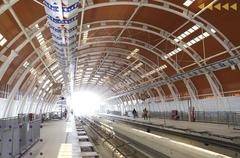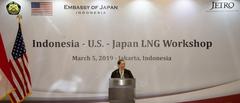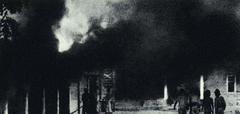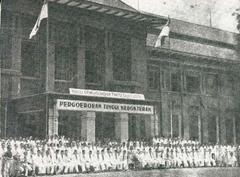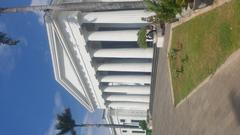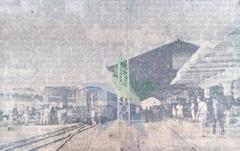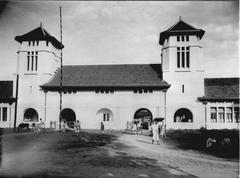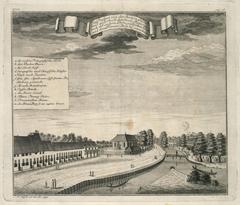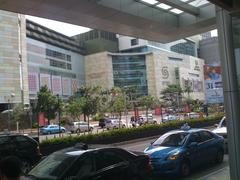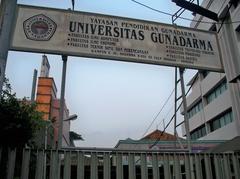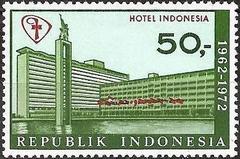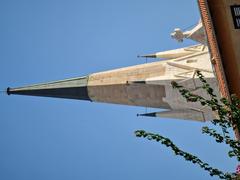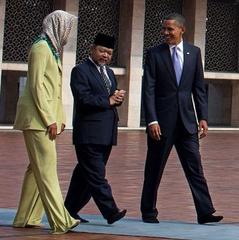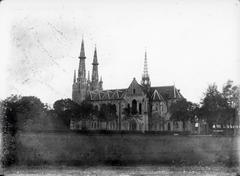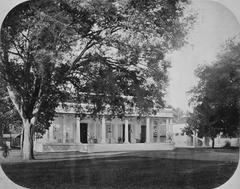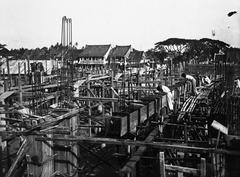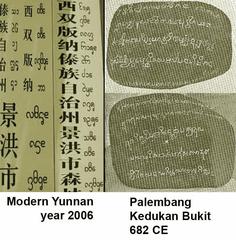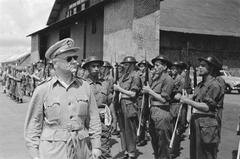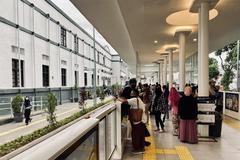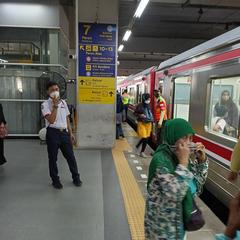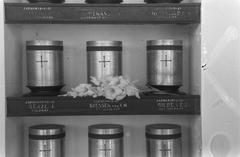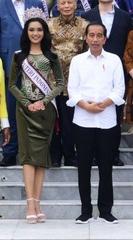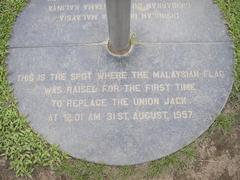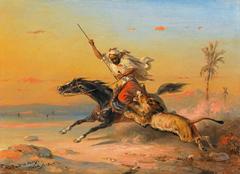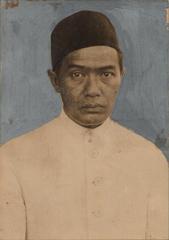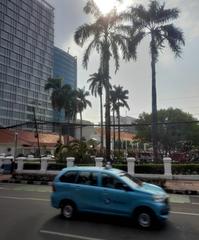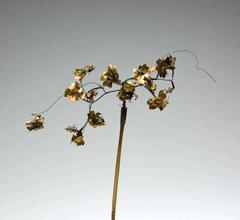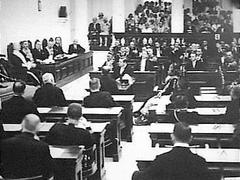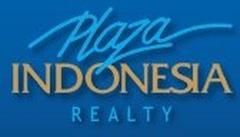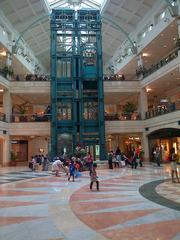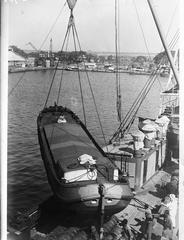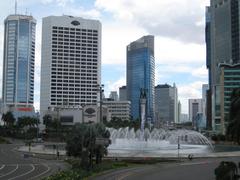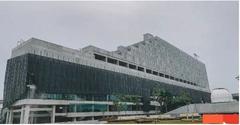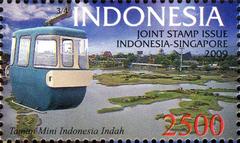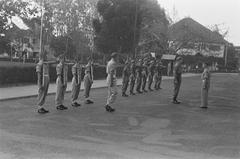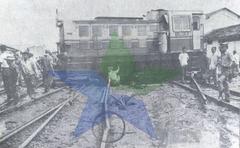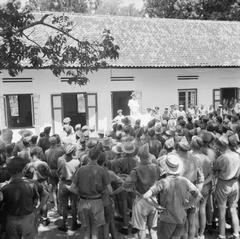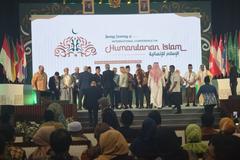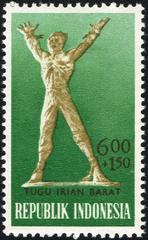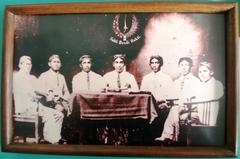Visiting Museum Sejarah Jakarta: Hours, Tickets, and Tips
Date: 17/07/2024
Introduction
The Museum Sejarah Jakarta, also known as the Jakarta History Museum, is a vital institution located in the heart of Jakarta’s historic Kota Tua (Old Town) district. Housed in the former Stadhuis (City Hall) of Batavia, the old name for Jakarta during the Dutch colonial period, this museum offers visitors a comprehensive journey through the city’s rich and diverse history. Constructed in 1710 by the Dutch East India Company (VOC), the building itself is a prime example of 17th-century Dutch colonial architecture, characterized by its grand facade, high windows, and gabled roof (Sejarah Jakarta).
The museum’s expansive collection includes over 23,500 objects, ranging from prehistoric artifacts to items from the Dutch colonial era and the Indonesian independence movement, making it an invaluable resource for understanding Jakarta’s past and its evolution into the bustling metropolis it is today (Jakarta History Museum). The Museum Sejarah Jakarta is not only a repository of historical artifacts but also a center for cultural preservation, educational programs, and community engagement. Its role in showcasing the unique blend of cultural influences that have shaped Jakarta, including Malay, Sundanese, Javanese, Arab, Chinese, and Dutch, underscores its significance in promoting and preserving Indonesian heritage (Visitor Tips).
Table of Contents
- [Origins and Establishment](#origins-and-establishmentorigins-and-establishment)
- [Colonial Era](#colonial-eracolonial-era)
- [Post-Independence Transformation](#post-independence-transformationpost-independence-transformation)
- [Architectural Significance](#architectural-significancearchitectural-significance)
- [Collections and Exhibits](#collections-and-exhibitscollections-and-exhibits)
- [Pre-Colonial Era](#pre-colonial-erapre-colonial-era)
- [Colonial Period](#colonial-periodcolonial-period)
- [Independence and Modern Era](#independence-and-modern-eraindependence-and-modern-era)
- [Notable Artifacts](#notable-artifactsnotable-artifacts)
- [Restoration and Preservation Efforts](#restoration-and-preservation-effortsrestoration-and-preservation-efforts)
- [Educational and Cultural Programs](#educational-and-cultural-programseducational-and-cultural-programs)
- [Visitor Information](#visitor-informationvisitor-information)
- [Tickets and Opening Hours](#tickets-and-opening-hourstickets-and-opening-hours)
- [Nearby Attractions](#nearby-attractionsnearby-attractions)
- [FAQ](#faqfaq)
- [Community Engagement](#community-engagementcommunity-engagement)
- [Economic Significance](#economic-significanceeconomic-significance)
Origins and Establishment
The Museum Sejarah Jakarta is housed in the historic building of the former Stadhuis (City Hall) of Batavia. Constructed in 1710 by the Dutch East India Company (VOC), the building served as the administrative headquarters of the city. The architecture of the building is a fine example of 17th-century Dutch colonial style, characterized by its grand facade, high windows, and gabled roof.
Colonial Era
During the Dutch colonial era, the Stadhuis was the center of political and administrative activities in Batavia. The building housed the city council and served as a courthouse. The basement of the Stadhuis was used as a prison, where many local and foreign prisoners were held under harsh conditions.
Post-Independence Transformation
After Indonesia gained independence in 1945, the building continued to serve various administrative functions. Recognizing its historical significance, the Indonesian government decided to transform the Stadhuis into a museum. In 1974, the building was officially inaugurated as the Museum Sejarah Jakarta by then-Governor Ali Sadikin. The museum was established to preserve and showcase the rich history of Jakarta, from its pre-colonial days to the present.
Architectural Significance
The Museum Sejarah Jakarta is not only significant for its historical exhibits but also for its architectural value. The building is a prime example of Dutch colonial architecture, featuring thick walls, large windows, and a spacious courtyard. The interior retains many original features, including wooden beams, staircases, and tiled floors. The preservation of these architectural elements provides visitors with a glimpse into the colonial past of Jakarta.
Collections and Exhibits
The museum’s collection is extensive, comprising over 23,500 objects that reflect the history and culture of Jakarta. The exhibits are divided into several sections, each focusing on different periods and aspects of the city’s history.
Pre-Colonial Era
The pre-colonial section features artifacts from the early kingdoms that existed in the Jakarta area, such as the Tarumanagara and Sunda Kingdoms. These artifacts include stone inscriptions, pottery, and tools that provide insights into the lives and cultures of the early inhabitants of the region.
Colonial Period
The colonial period is extensively covered in the museum, with exhibits showcasing the impact of Dutch colonization on Jakarta. Visitors can see maps, paintings, and photographs that depict the transformation of Batavia into a bustling colonial city. The museum also houses a collection of furniture, ceramics, and other objects from the Dutch colonial era.
Independence and Modern Era
The museum highlights the struggle for Indonesian independence and the subsequent development of Jakarta as the capital of the Republic of Indonesia. Exhibits include photographs, documents, and personal belongings of prominent figures in the independence movement. The modern era section features displays on the rapid urbanization and growth of Jakarta in the post-independence period.
Notable Artifacts
Among the notable artifacts in the museum’s collection is the Jagur Cannon, a large Portuguese cannon captured by the Dutch and later used by the Indonesian forces during the struggle for independence. The cannon is adorned with intricate carvings and inscriptions, making it a significant historical and artistic object.
Another important artifact is the replica of the Tugu Inscription, an ancient stone inscription dating back to the 5th century. The inscription is one of the oldest written records in Indonesia and provides valuable information about the early history of the region.
Restoration and Preservation Efforts
The Museum Sejarah Jakarta has undergone several restoration and preservation efforts to maintain its historical and architectural integrity. In recent years, the museum has implemented modern conservation techniques to protect its collections from environmental damage. The building itself has been carefully restored to preserve its original features while ensuring it meets contemporary safety standards.
Educational and Cultural Programs
In addition to its exhibits, the Museum Sejarah Jakarta offers a range of educational and cultural programs. These programs include guided tours, workshops, and lectures that aim to educate visitors about the history and culture of Jakarta. The museum also hosts temporary exhibitions and cultural events that showcase various aspects of Indonesian heritage.
Visitor Information
Tickets and Opening Hours
- Visiting Hours: The museum is open from 9 AM to 5 PM, Tuesday to Sunday.
- Ticket Prices: General admission is IDR 5,000, with discounts available for students and senior citizens. For detailed visiting hours and ticket prices, please check the official website here.
Nearby Attractions
- Fatahillah Square: A historical square located just outside the museum, offering a glimpse into Jakarta’s colonial past.
- Wayang Museum: Located nearby, this museum showcases traditional Indonesian puppetry (Wayang Museum).
- Café Batavia: A popular spot for tourists, offering a blend of historical ambiance and modern cuisine.
FAQ
- What are the Museum Sejarah Jakarta visiting hours?
- The museum is open from 9 AM to 5 PM, Tuesday to Sunday.
- How much are the tickets for Museum Sejarah Jakarta?
- General admission is IDR 5,000, with discounts available for students and senior citizens.
Community Engagement
The Museum Sejarah Jakarta is committed to engaging with the local community and making its resources accessible to all. The museum offers a range of community outreach programs, including free admission days, special events, and educational workshops. These programs are designed to make the museum’s resources accessible to a wider audience and encourage community participation in the preservation and celebration of Jakarta’s history and culture.
Economic Significance
The Museum Sejarah Jakarta contributes to the local economy by attracting tourists to the Kota Tua area. As one of the city’s most popular tourist attractions, the museum draws thousands of visitors each year, providing a boost to local businesses such as restaurants, cafes, and souvenir shops. The museum’s presence helps to sustain the local economy and supports the livelihoods of many people in the area.
Conclusion
The Museum Sejarah Jakarta is a vital institution that plays a multifaceted role in preserving, promoting, and educating about Jakarta’s rich history and cultural heritage. Its historical, cultural, educational, architectural, social, economic, and conservation significance make it an invaluable resource for both the local community and visitors from around the world. Through its diverse programs and initiatives, the museum continues to contribute to the cultural and social life of Jakarta, ensuring that the city’s history and heritage are preserved and celebrated for generations to come (Jakarta History).
The museum’s ongoing restoration and preservation efforts, coupled with its role in community engagement and economic contribution, highlight its multifaceted importance. By fostering a sense of community, promoting social cohesion, and supporting the local economy, the Museum Sejarah Jakarta continues to play a crucial role in Jakarta’s cultural and social landscape. For anyone interested in exploring the history and culture of Indonesia’s capital, a visit to the Museum Sejarah Jakarta offers an enriching and unforgettable experience (Visitor Tips).
References
- Discover the Museum Sejarah Jakarta - History, Visiting Hours, and Tickets, 2024, Author jakarta-tourism.go.id
- Discover the Rich History of Museum Sejarah Jakarta - Visiting Hours, Tickets, and More, 2024, Author museumsejarahjakarta.com
- Visitor Tips for Museum Sejarah Jakarta - Hours, Tickets, and Attractions, 2024, Author museumsejarahjakarta.com
